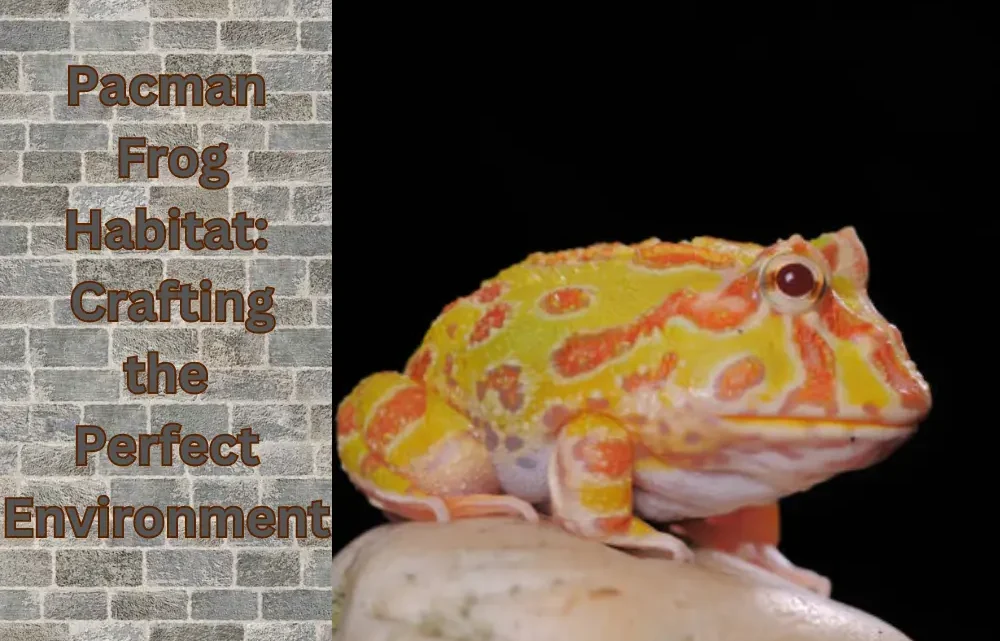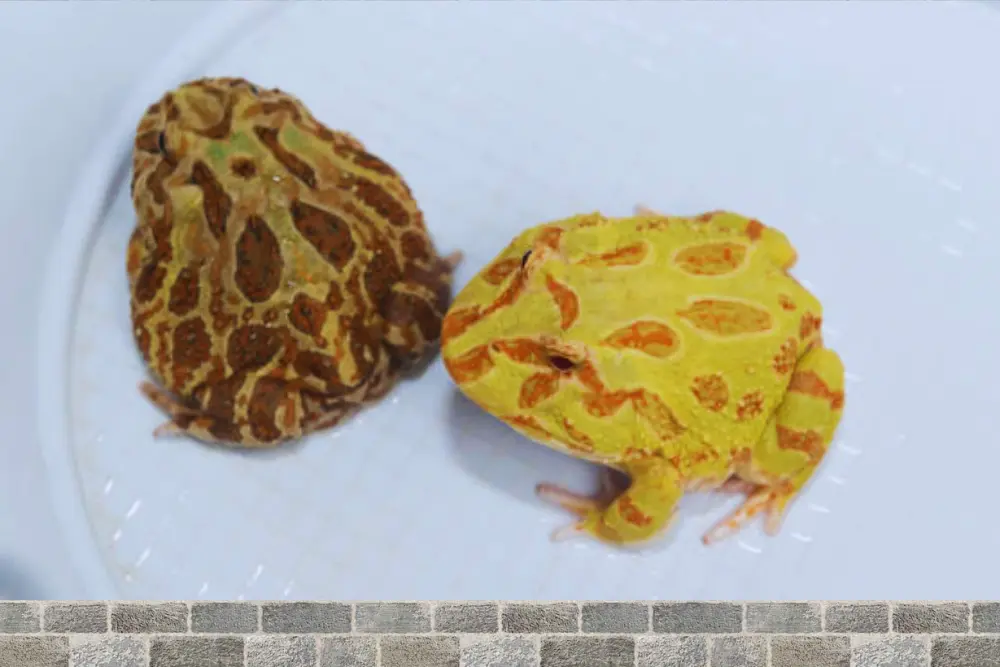
Pacman Frog Habitat: Crafting the Perfect Environment
Think about Pacman frogs, also known as horned frogs, and imagine their amazing world. These friendly amphibians are named after a popular video game character because they have round bodies and big mouths. They can easily win over the hearts of even the most skeptical animal lovers. While Pacman frogs may not be evading ghosts in mazes, they have environmental needs. Understanding and providing the ideal Pacman Frog Habitat is essential to their well-being.
In this exciting journey, we’ll discover all about creating a great home for Pacman frogs. To make them happy and fun pets, you need to understand their natural habitat, preferred temperature, how to set up their living space, and how to take care of them.
Discovering the Natural Pacman Frog Habitat
Before we start creating the ideal habitat for these Pacman frogs, let’s take a moment to think about where they originally came from. These interesting amphibians are found in South American countries like Argentina, Brazil, and Uruguay. You can find them in many different types of warm habitats, like grasslands, marshes, and even deep parts of forests. And of course, they really like places next to shiny bodies of water like ponds, streams, or the ocean.
Imagine this the Pacman frog is really good at digging holes. They spend a long time underground, waiting for unsuspecting prey to pass by and get caught in their strong jaws.
Building Their Kingdom within Enclosures

Ensuring a suitable habitat is essential for keeping your Pacman frog content and healthy. Here are key considerations:
- Size Matters: Begin with selecting an appropriately sized terrarium for one adult Pacman frog, ideally around 10 to 20 gallons. Larger enclosures offer more space, allowing them to exhibit natural behaviors and engage in enjoyable activities.
- The Right Substrate: Choose substrate materials that enable their webbed feet to land comfortably. Balancing humidity is achieved by utilizing coconut coir, sphagnum moss, and leaf litter, mimicking conditions found in their native habitat. Maintain a substrate depth of approximately three to four inches for comfortable burrowing.
- Temperature and Lighting: Picture a kingdom where temperature and lighting are meticulously controlled. Pacman frogs thrive at temperatures between 75 and 85 degrees Fahrenheit (24 and 29 degrees Celsius) during the day, with a slight decrease at night. UVB lighting isn’t necessary, but a small heat lamp is a valuable tool for maintaining the correct temperature.
- Humidity: Envision a high humidity environment, reminiscent of a jungle, with levels ranging from 50 to 80 percent. Employ a hygrometer to ensure the optimal moisture content in the air, keeping their skin hydrated and facilitating shedding.
- Providing Hideaways: Imagine creating secret rooms and cozy corners for your enigmatic rulers. Utilize cork bark, leaves, or manmade caverns to offer secure hiding places.
Consider a small water bowl as a miniature fountain of youth for your pet. Pacman frogs aren’t proficient swimmers, so easy access to water is essential for drinking and soaking.
Feeding the Royal Family
Pacman frogs boast hearty appetites. In their natural habitat, their diet predominantly consists of live prey. In captivity, they relish crickets, mealworms, and appropriately sized earthworms. Occasionally, a small pinkie mouse can serve as a special treat for larger frogs. To ensure their well-being, supplement their diet with calcium and vitamins.
In your palace, provide food for your Pacman frog every two to three days, adjusting the quantity based on their age and size. Just like royalty, these frogs can gain weight, so moderation is key.
Maintenance and Care
Every kingdom requires regular upkeep to thrive:
- Maintenance: Regularly cleaning the enclosure is akin to tending a beautiful garden. Dispose of leftover food and waste, and clean the surface. Replace the substrate entirely every few months to maintain a clean environment.
- Handling: Treat Pacman frogs with the care you would lavish on precious gems. Limit interaction to essential tasks such as cleaning or moving them, always ensuring your hands are thoroughly washed before touching their sensitive skin.
Additionally, closely monitor your frog’s health and safety. Watch for signs of illness, such as fatigue, loss of appetite, darkening skin, or respiratory issues. If any of these symptoms arise, consult a veterinarian experienced in amphibian care.
Pacman Frog Habitat: A Home Fit for Royalty
In conclusion, creating the perfect Pacman Frog Habitat is paramount to ensuring the well-being of these remarkable amphibians.
To help your Pacman frogs thrive in captivity, create a habitat that resembles their natural environment. When you take care of these cool amphibians, it’s important to make a habitat that looks like their natural home. This means using the right kind of ground, keeping the temperature and humidity just right, and giving them places to hide. If you give your Pacman frog good food, take care of it regularly, and show it lots of love, it will give you many years of fun.


